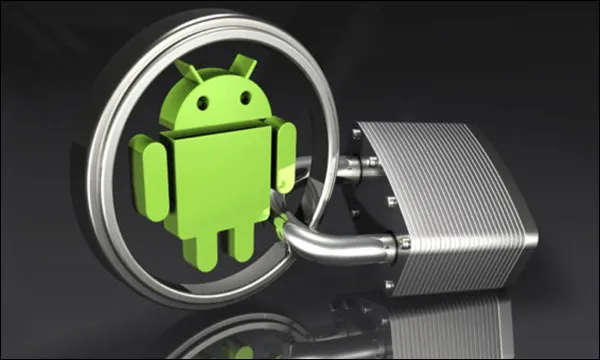
Unlocking the Freedom: A Comprehensive Guide on How to Carrier Unlock an Android Phone
Table of Contents
ToggleIn the dynamic world of smartphones, the flexibility to choose your carrier is a valuable asset. Carrier unlocking your Android phone allows you to break free from the constraints of a specific network, enabling you to switch to any carrier of your choice. This blog post serves as your every day go-to guide, providing step-by-step instructions on how to carrier unlock your Android device.
Understanding Carrier Unlocking: Why is it Important?
Carrier locking is a common practice where a mobile device is bound to a specific carrier, limiting its use to that network. Unlocking your Android phone empowers you to use it with any carrier, giving you the freedom to choose plans, access better deals, and use your device internationally with local SIM cards.
Prerequisites: What You Need Before You Begin
Before delving into the unlocking process, ensure you have the following:
- IMEI Number: You can find this unique identifier by dialing *#06# on your phone or checking the device settings.
- Carrier Account Details: Ensure you have your account details, especially if your phone is still under contract.
- Eligibility Check: Confirm that your phone is eligible for unlocking. Some carriers have specific criteria, such as completing the contract term or paying off the device.
Step-by-Step Guide: How to Carrier Unlock Your Android Phone
1. Contact Your Carrier:
Begin by reaching out to your current carrier’s customer service. Inquire about the carrier unlocking process and check if your device meets the eligibility criteria.
2. Provide Necessary Information:
Share your IMEI number and any other required details with the customer service representative. They will guide you through the unlocking process or provide you with an unlock code.
3. Follow Carrier Instructions:
Each carrier has a specific set of instructions for unlocking. This may involve entering an unlock code, initiating the process through a mobile app, or completing the unlock online.
4. Third-Party Unlocking Services:
If your carrier is unable to assist or if you prefer an alternative route, consider third-party unlocking services. Numerous reputable services online can unlock your Android phone for a fee. Ensure the service is reliable and has positive reviews before proceeding.
5. Insert a New SIM Card:
Once the unlocking process is complete, power off your phone, insert a new SIM card from the carrier of your choice, and power it back on. Your Android device should now be free from carrier restrictions.
Benefits of Carrier Unlocking: Unlocking the Full Potential
- Freedom to Choose: Switch carriers without changing your device, giving you the flexibility to choose plans and services that best suit your needs.
- International Travel: Easily use local SIM cards when traveling internationally, avoiding expensive roaming charges.
- Resale Value: Carrier-unlocked phones often have a higher resale value as they appeal to a broader audience.
- Access to Better Deals: Take advantage of special promotions, discounts, and better deals offered by different carriers.
Conclusion: Unleash Your Android Phone’s Potential
Carrier unlocking your Android phone opens up a world of possibilities, allowing you to take control of your device and choose the carrier that aligns with your preferences. Follow the outlined steps, ensure you meet the prerequisites, and experience the freedom of an unlocked Android phone – a device truly tailored to your needs.
FAQs (Frequently Asked Questions) on Carrier Unlocking an Android Phone:
Q1: What does it mean to carrier unlock an Android phone?
Ans: Carrier unlocking refers to the process of freeing a mobile device from the restrictions imposed by a specific carrier, allowing it to be used with any carrier’s SIM card.
Q2: Is carrier unlocking legal?
Ans: Yes, carrier unlocking is legal in many countries, including the United States. However, it’s essential to comply with the terms and conditions of your carrier and local laws.
Q3: How can I check if my Android phone is eligible for carrier unlocking?
Ans: Contact your current carrier’s customer service to inquire about eligibility. Typically, eligibility depends on factors such as contract completion, payment status, and device compatibility.
Q4: Can I carrier unlock my phone if it’s still under contract?
Ans: It depends on your carrier’s policies. Some carriers may require you to fulfill the contract terms or pay off the device before allowing unlocking.
Q5: What is an IMEI number, and where can I find it?
Ans: The IMEI (International Mobile Equipment Identity) number is a unique identifier for your phone. You can find it by dialing #06# on your phone or checking the device settings.
Q6: Can I unlock my phone without contacting my carrier?
Ans: While contacting your carrier is the recommended method, some third-party services offer unlocking for a fee. Ensure you choose a reputable service to avoid potential issues.
Q7: How long does the carrier unlocking process take?
Ans: The duration varies by carrier. Some carriers provide instant unlocking, while others may take a few days. Third-party services may have their own timelines.
Q8: Will carrier unlocking void my warranty?
Ans: No, carrier unlocking itself does not void your phone’s warranty. However, if you breach the warranty terms during the process, it could impact your warranty.
Q9: Can I switch back to my original carrier after unlocking my phone?
Ans: Yes, carrier unlocking is typically permanent. You can switch between carriers as needed, using the SIM card of your choice.
Q10: Are there any risks associated with carrier unlocking?
Ans: When done through official channels, carrier unlocking is generally safe. However, using unauthorized services or attempting unofficial methods may pose risks such as software issues or voided warranties. It’s crucial to follow recommended procedures.

Leave a Reply